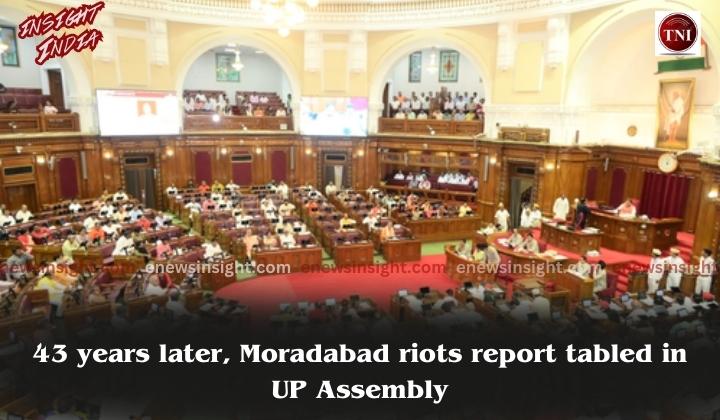Lucknow: A report on an inquiry into the 1980 Moradabad riots by a retired high court judge was tabled in the Uttar Pradesh Assembly on Tuesday, almost 43 years after the incident took place.
Parliamentary Affairs Minister Suresh Kumar Khanna tabled the report in the Vidhan Sabha.
In May this year, the state Cabinet had decided to table the Justice M.P. Saxena Commission’s report in the Assembly.
The 1980 Moradabad riots had lasted for months, in which scores of people were killed and several injured in different districts of the state.
Saxena, who had retired as a judge in the Allahabad High Court, had submitted his report in November 1983.
When the riots took place, there was Congress government in Uttar Pradesh under the leadership of Chief Minister V.P. Singh. The Congress government, led by Indira Gandhi, was also in power at the Centre.
The move to bring the Moradabad riot report in the public realm after 43 long years is an attempt to corner the Congress ahead of the 2024 Lok Sabha elections.
The Moradabad riots, one of the worst in UP, had started on Eid on August 13, 1980, inside the Eidgah of Moradabad. It soon snowballed into a direct confrontation between the Muslims and the police and the Provincial Armed Constabulary (PAC).
Then Chief Minister V.P. Singh had ordered an inquiry by sitting Allahabad High Court judge Mathura Prasad Saxena.
Support Independent Journalism? Keep us live.
Saxena had submitted his report to Singh’s successor Sripati Mishra on November 20, 1983. However, like so many other probe reports, the contents of the investigation and the recommendations were not made public.
What provoked the 1980 Moradabad riots was a pig which reportedly strayed into the local Eidgah during the Eid-ul-Fitr prayers. Approximately 50,000 people were believed to be praying inside and outside the Eidgah. When some Muslims asked an on-duty policeman to chase the pig away, he reportedly refused, leading to a heated argument.
Instead of assessing the gravity of the situation, the police resorted to lathi-charge which was retaliated by stone pelting in which an SSP and other policemen suffered injuries.
Then ADM D.P. Singh, who was present on the spot to prevent any untoward incident, was also injured and later succumbed to his injuries.
Approximately 100 deaths occurred on that day while many went missing.
Angry Muslims marched towards the Galshaheed police station and set it ablaze. Eyewitnesses recall it to be a direct confrontation between the Muslims and the police, which was soon given a religious colour as part of a political agenda.
The violent incidents quickly spread to rural Moradabad and neighbouring Sambhal, Aligarh, Bareilly and even up to Allahabad.
The violence finally subsided only in the early months of 1981. The total death toll is uncertain.
Speaking in the Vidhan Sabha, then Uttar Pradesh Home Minister Swarup Kumari Bakshi had admitted 289 deaths. However, compensation was paid for 400 deaths, while the unofficial estimates of loss of life runs as high as 2,500.
With rioting continuing for months, the brass industry, which formed the backbone of the city’s economy, was adversely affected as foreign orders could not be fulfilled and were therefore diverted to other countries. (IANS)


Comments are closed.